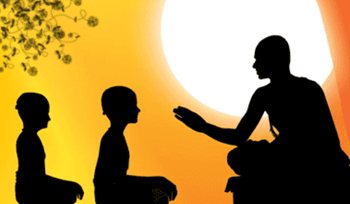The word Ayur-Veda specifically means the “Science or Knowledge of Life or Longevity”.
In other words, it means ‘how we are to live and manage our life’. An appropriate term to describe Ayur-Veda is ‘The Yoga of Life’.
It is a system that – when correctly understood, applied and practiced – leads one to Yoga, our ultimate goal or Dharma. It is a wholly Spiritual system and discipline.

At Ancient’s Best our focus is classical/traditional and there some differences between what we practice and the modern approach of Ayurveda.
This article is to expand and explain how and why things have changed today and what the meaning of ‘Traditional’ really is. The first part explains what traditional actually means and how Ayurveda was practised and how we still practice it at Ancient’s Best. The second part of the article looks at why things have changed so much over the years.
This explanation is very important as the word ‘Traditional’ is very commonly and incorrectly used thus confusing many people not the least Ayurvedic Practitioners!
Modern Ayurveda is allopathic in its approach and is secular rather than religious or spiritual.
The role of modern Ayurveda is that of a system of alternative medicine that treats diseases and the symptoms of diseases. The only real difference to modern medicine is that natural approaches such as herbs and massage are used rather than chemical drugs. But the focus is still on treating the disease. The principles and philosophy of Ayurveda are not the key or essence in this modern system, but rather a topic to be studied in a theoretical sense.
Modern Ayurvedic Doctors address and see themselves as Doctors and go through a five year (or longer) disciplinary program at University and study most of what a Modern-day Doctor has to study, in addition to some aspects of Ayurvedic Philosophy and principles.
Classically, Ayurveda also looked at the management of disease and symptoms but this was only an aspect or more secondary approach to working with an individual. It was never the primary focus. Today modern Ayurveda focuses almost completely on this aspect, with the spiritual focus greatly or completely diminished.
To most, the two approaches, traditional and modern, are thought to be the same, even to those who are practicing this Science of Life!
Many of these modern Ayurvedic Doctors may indeed have ancestors that followed the traditions closely. In fact when people in India talk about tradition (Sampradya in Sanskrit and Paramparai in Tamil), it could mean they have a lineage of forefathers who have followed a particular and Ancient discipline or practice of Yoga, Ayurveda or Tantric rituals.
The student could claim to be Traditional if he or she has undertaken to practice the similar science as handed down to him or her by his or her forefathers. But how can one claim a particular tradition if one has chosen to study Ayurveda in a University and become an Ayurvedic Doctor rather than follow the path of his or her elders?
Another factor that confuses is that some treatment centres in India have been around for many years and they may even be quite strict in terms of their use of food, herbs, exercise etc. They use the terms Authentic and Traditional but the difference again is the approach being one of disease treatment rather than total treatment. Modern Ayurveda is still symptomatic in its focus.
Classical or Traditional Ayurveda is not well understood today. This is not just in the West but especially so in India.
Classical Ayurveda focuses on the subtle or underlying disturbances in an individual rather than the symptoms or characteristics they are exhibiting. These are the root causes of any problems manifest now or still on the way.
Identifying the root cause cannot be achieved by modern diagnostic approaches ,and in fact the mind or intellect must be suspended by one well versed in spiritual practice and who can be free of Ego, conditioned thoughts, and preconceived ideas.
These qualities cannot and are not taught in modern day colleges of higher learning and take a different level of discipline and practice to master.
Another problem in modern times relates to using characterisation to determine subtle disturbance (termed ‘Dosha’) from personality or physical characteristics.
This has led to many cases of misdiagnosis (both by students and practitioners) and therefore incorrect and inappropriate treatment. A lot of this harks back to misinterpretation and incorrect translation of Indian texts which are symbolic and subtle in their meaning rather than literal. These mistakes in interpretation have become ‘facts’ as they are constantly repeated and printed in numerous books and websites.
Of course it is a lot easier to identify and work on symptoms than to work traditionally!
Firstly, symptoms are already apparent and can be seen and accepted. The subtle is much more difficult to appreciate or sense and the problem may still be ‘on the way’ rather than manifest so far less urgent to the minds of many patients and therapists. They may even doubt any such disturbance exists as they can’t yet ‘see it’.
Secondly, any symptomatic treatment is likely to give some immediate relief and this is welcomed and gives comfort to the one suffering. It may appear the problem has gone, at least temporarily, and it is no longer disturbing our life in the same way. We don’t need to think about it until such time we get sick again.
Thirdly most symptomatic treatments don’t require major changes in lifestyle, thinking, or habits, all of which take discipline, responsibility, effort and time.
This is not just true for the student/patient but especially so for the practitioner who must guide, confront, direct, and continually educate and challenge the patient/student they are working with.
This takes an enormous amount of time and energy as we aren’t just trying to overcome the disturbances themselves, but more importantly, trying to adjust routines and attitudes that may be stubbornly and deeply entrenched. And the mind is ever ready to resist change, to doubt, and to sabotage all efforts.
Traditional Ayurveda is, at the end of the day, often a battle with Ego, and it takes an evolved student to realise this and have the patience to persevere, to grow, and to have faith in the practitioner, in themselves, and ultimately in the Self that is all.
The traditional and spiritual path appears a much harder road to travel and yet it is the road we are all on whether we realise it or not. Ignorance of this is why we suffer in the first place and this is the real tragedy and sickness of our modern world.
So where has this shift in approach and thinking occurred and why? We will address this in the second part of this short article as a separate blog post (Part 2 of this article).
